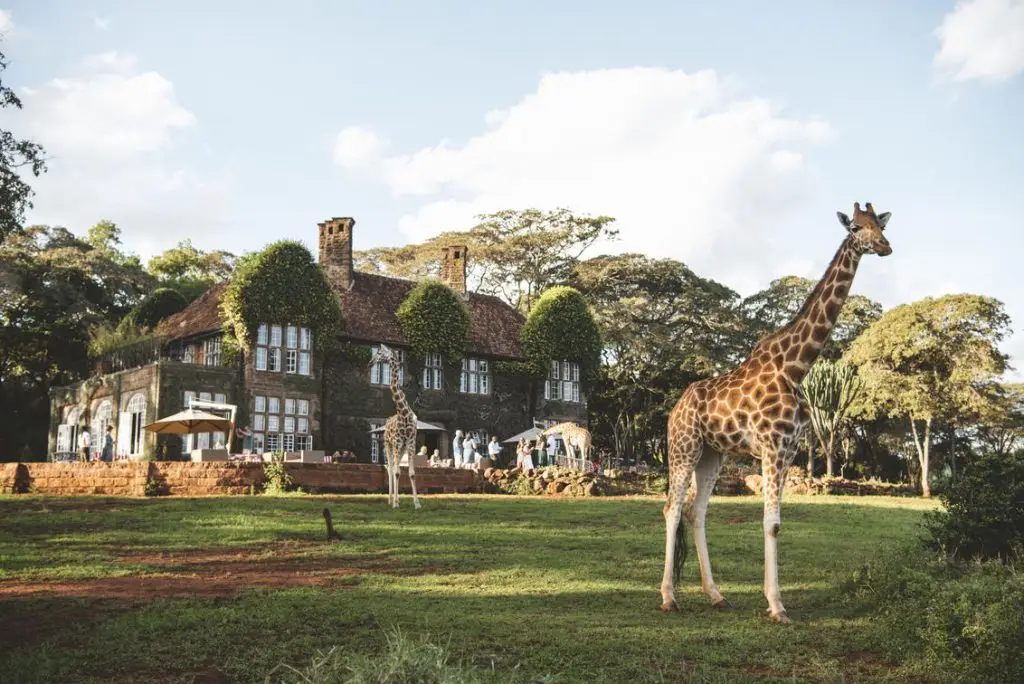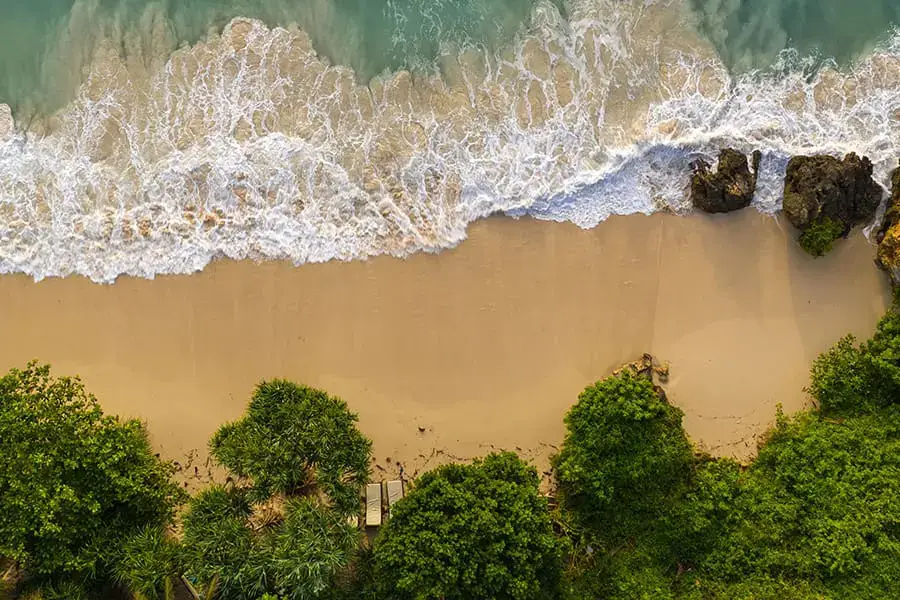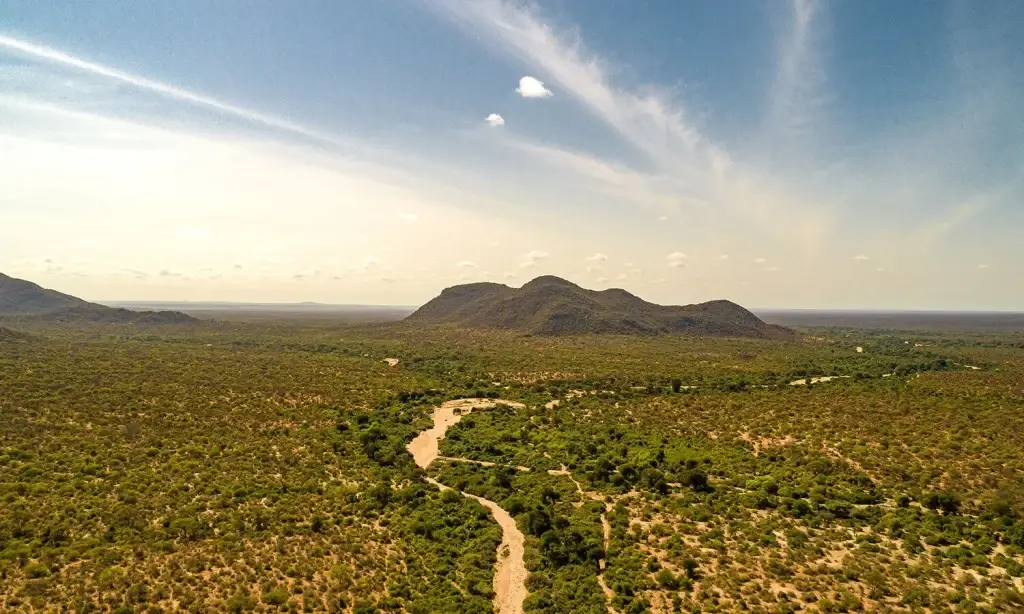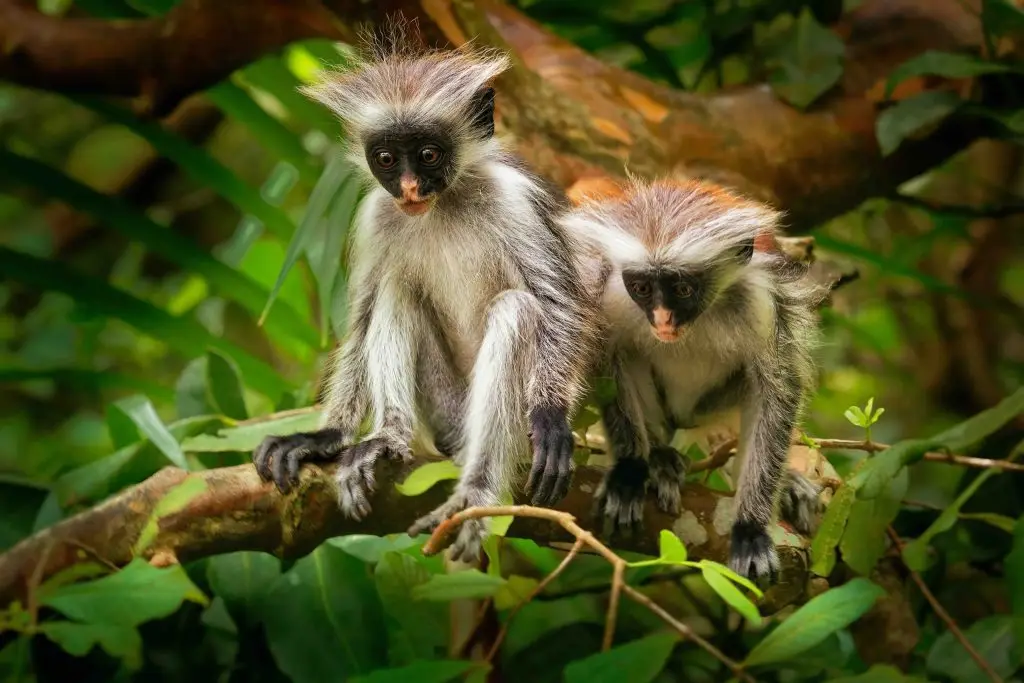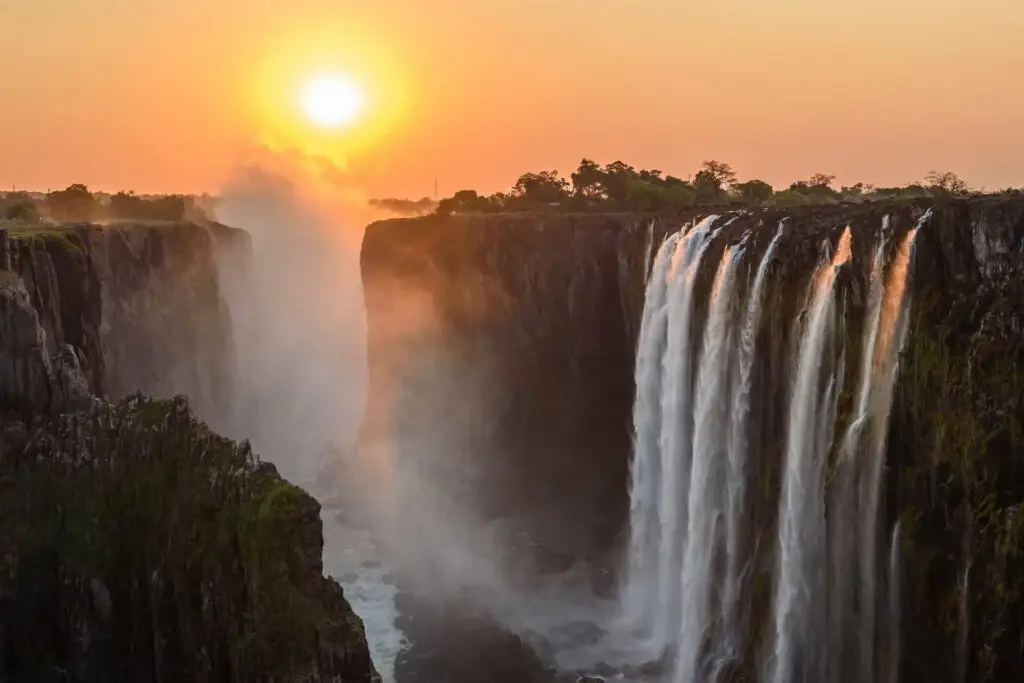What is the Wildebeest Calving Season?
Wildebeest calving is an event that occurs every year between January to March. This article is A Guide To Wildebeest Calving Season, Safaris to book and learning when is the best time to visit.
This season sees over 8,000 calves born in just a single day which amounts to approximately 500,000+ calves born each calving season. The calving season is vital to the wildebeest’s overall survival as it prevents them from going extinct and therefore is key to the continuance of The Great Wildebeest Migration.
Besides witnessing the birth of the calves there’s a dramatic predator-prey interaction as the area sees, lions, leopards, cheetahs and hyenas who are eager to take advantage of the enormous number of calves being born. The season begins with over a million calves migrating from the northern part of the Serengeti to the south so as to calve. The wildebeests move so far into the south that they get into the Ngorongoro Conservation Area but not quite into the crater.
The pregnant women are attracted by the green calcium-rich grass that shoots after the rains. The plains are also open creating sufficient space for the calving to occur and is also easy for them to navigate with fewer obstructions while also creating clear grounds for the mothers to keep watch of predators. The season seas over 80% of female wildebeests giving birth with each producing one calve hence the huge numbers. Wildebeest mating season happens in the period of May to June, they have a gestation period of about 8.5 months which falls in the periods of mid to late June and February.
Wildebeests do not however move to the south alone; they move with herds of zebras and gazelles. This is because they play consume the longer grasses that are not particularly tasty to the young wildebeests. After the zebras and gazelles have grazed the soft and nutritious grass is left exposed to the young ones which is easier for them to nibble on.
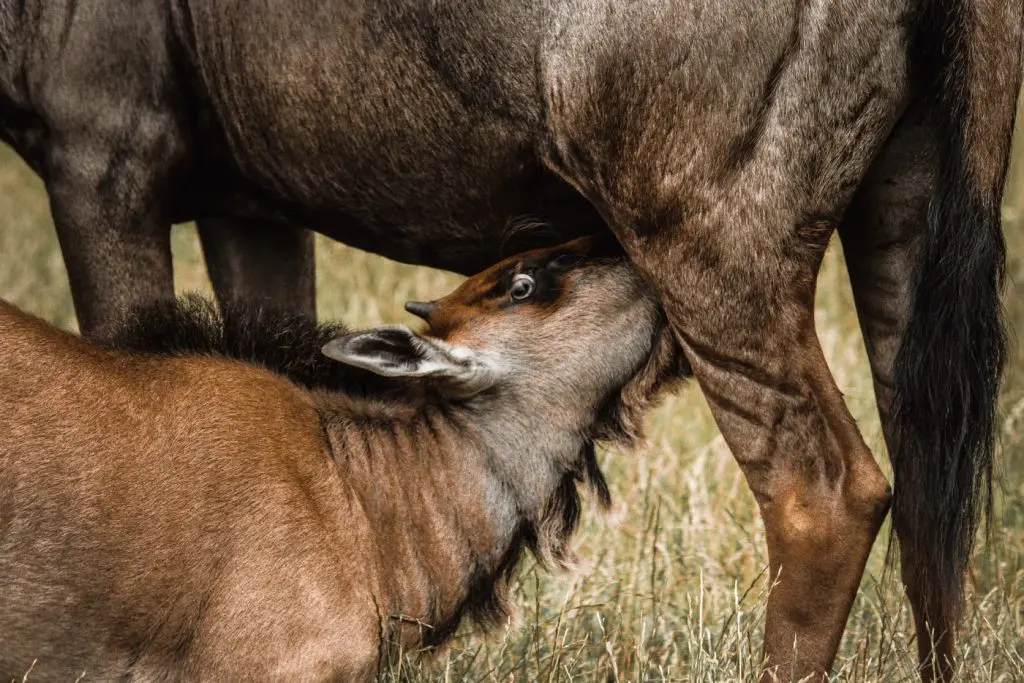
Where can you see the Wildebeest Calving Season?
Serengeti National Park offers the best sighting as it is the primary location where the calving takes place, more specifically in the southern Serengeti around the short grass plains in Ndutu Conservation Area. This region offers them enough grass ideal for nursing the young in their first weeks.
But why do they migrate to the southern Serengeti specifically for its grass? In the past the Ngorongoro and its surroundings were a hotspot of volcanic activity. The ash then that came out of the intense eruptions would be carried by the wind and deposited on the Ndutu plains. This caused the soil in the area to be enriched and nourished. Hence, when it rains there is a green grass carpet that emerges that is irresistible to the mother wildebeests.
During this remarkable spectacle another key part of the maintenance of the ecosystem occurs, this is the predator-prey action. Wildebeest calves have to be up and moving with the herd in a matter of minutes or they are at risk of being preyed on.
The number of predators in the area increases when the calving begins. Wildebeest mothers are familiar to the predators’ tactics and therefore they give birth on the shorter grass plains where they can easily see predators approaching. Male wildebeests and other female wildebeests’ kind of create a barrier around the calves in an attempt to provide protection to the calves therefore increasing their chances of survival.
The calving season is not only crucial to wildebeests’ survival but to predator survival as well. Predators have coordinated their birthing period to those of wildebeests. Why? This is because this increases the chance of survival for their offspring’s. With the huge number of wildebeest calves its easier for female predators (lions, cheetahs and leopards) to hunt for their hungry cubs while also teaching them the important lesson on how to hunt for their own survival by practicing on the young calves.
This predator-prey action is vital to the grasslands as well as the predators keep the wildebeest’s population in check which prevents overgrazing which would harm the health of the land putting the growth of green and nutritious grass at risk.

Serengeti National Park
Its located in Tanzania and is split into five major regions. This are the South of Serengeti which is the Ndutu region, The East, South, West also known as Grumeti, Central also Seronera and the North Region of Serengeti. The Wildebeest calving happens in the southern part, Ndutu due to the abundance and quality of grass.
Wildebeest migration sees the movement happening from the south of Serengeti to the Masai Mara and back into the Serengeti. This begins in the Ndutu Conservation Area from January to March then in between March to June they migrate back towards the North to cross towards the Masai Mara.

Ngorongoro Conservation Area
The Ngorongoro Conservation Area was once part of the Serengeti National before the two were split in 1959. Recognized as the Africa’s seventh natural wonder, the park is diverse with wildlife and several geographical wonders as well as semi-nomadic Maasai who reside in and near the park. Besides the wildlife there are several things to see in the conservation like the Ngorongoro – Empakaai – Olmoti craters, Olduvai Gorge, Endoro waterfalls and elephants caves among others.
The area is also a great spot to witness the wildebeest calving as the Ndutu Conservation Area is located in the Ngorongoro Conservation and on the outskirts of the southern Serengeti plains. Some of its resident animals include giraffes, bat-eared fox, genet, wildcat, jackal, dik-dik, elephant, lion, cheetah, leopard and others.
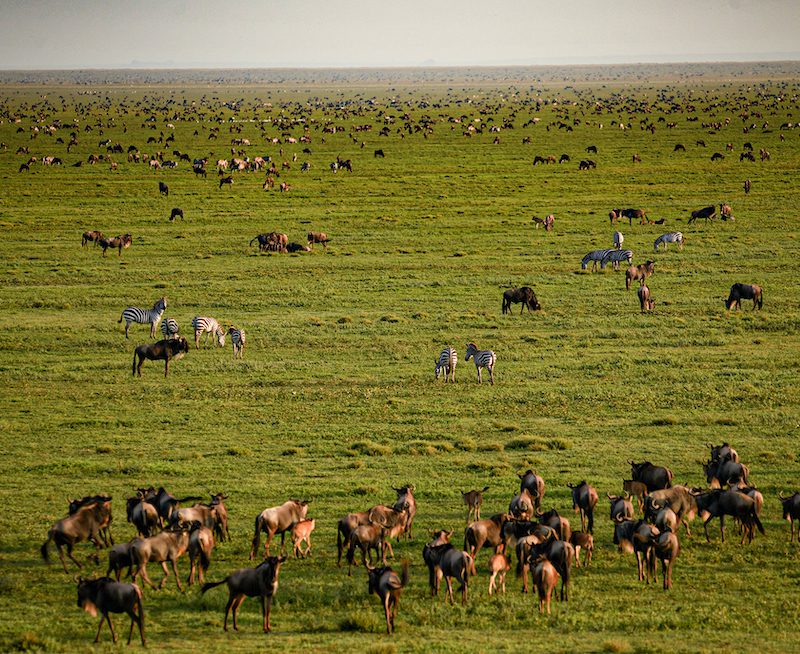
Safaris to pair with the calving season
Add Lake Manyara National Park to Your itinerary
Lake Manyara National Park has its shot dry season during the months of January and February. Lake Manyara is an alkaline lake that covers 220 sq. kilometers which is about two thirds of the entire parks total surface area.
The area has elephants, giraffes, buffaloes, tree climbing lions, zebras, impalas, warthogs and waterbucks. This is a great addition to the calving season as it provides a different feel and sightings completely different to that of either the Ndutu area or Ngorongoro.

Gorilla trekking in Uganda and Rwanda as an extension
The months of January to March are a great time for Gorilla trekking in either Uganda or Rwanda as the paths are generally drier and therefore easier to access. It is also easier to navigate through the forests as it is clearer. You can either join with the Bwindi Impenetrable National Park in Uganda or with the Volcanoes National Park in Rwanda.
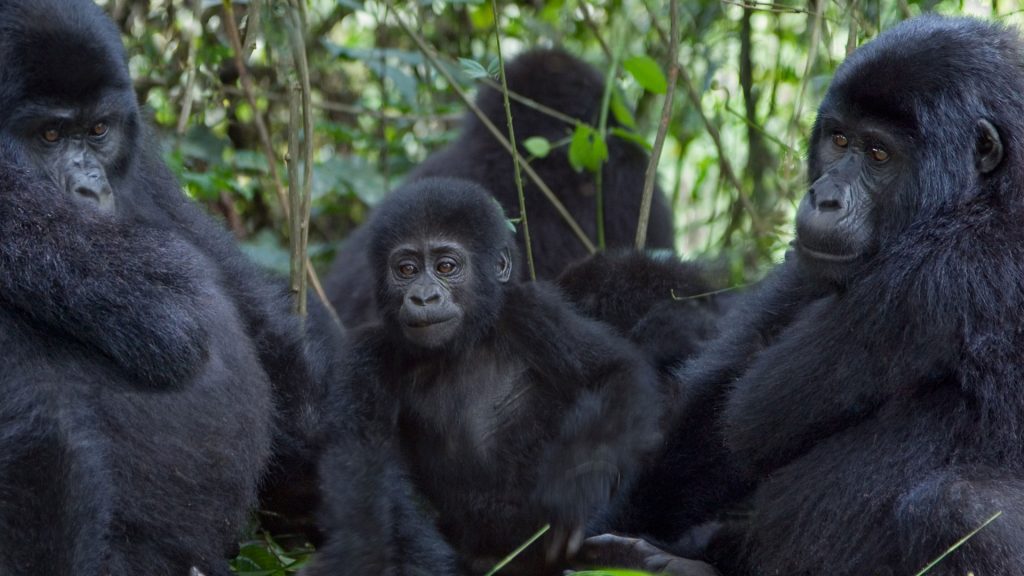
Tarangire National Park is a good addition to a Wildebeest Calving Safari
Covering an area of 2,600 sq. kilometers, Tarangire National Park ranks as the 6th largest park in Tanzania. Most famous for its large herds of elephants and mini-wildlife migration that happens during the dry season, basically seeing about 250,000 animals entering the park. The park also has a record of 550 bird species present so for bird lovers, this is a spot to add on your trip.
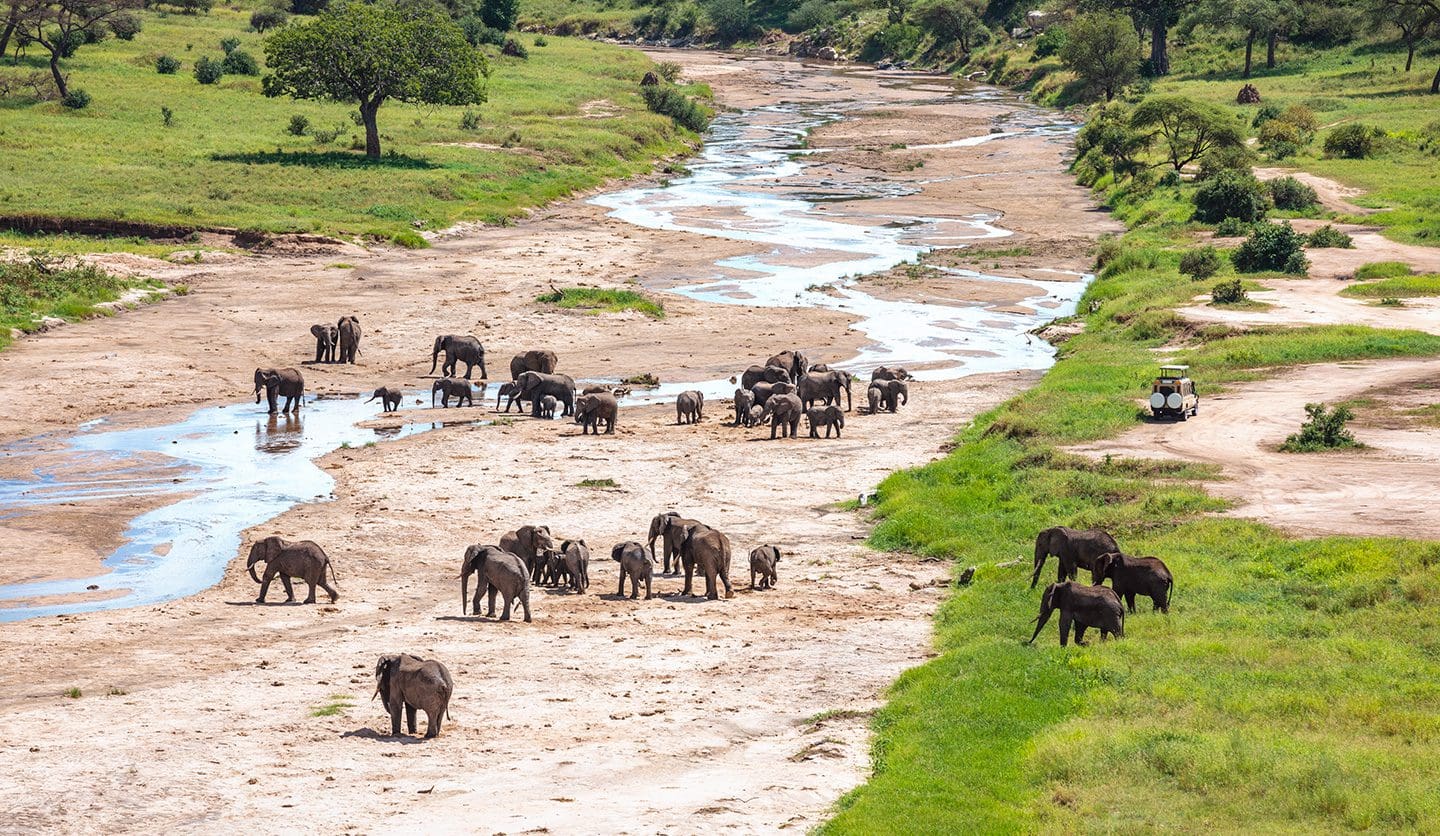
Wildebeest Calving Safaris offered by Cheetah Safaris:
- 4 Days 3 nights Wildebeest Calving Safaris – Tanzania Tours
- 6 Days Ngorongoro and Serengeti N. Park Wildebeest Calving Season Safari
- 12 Days Wildebeest Calving Safaris – Tanzania Tours
- 9 Days 8 Nights best of Kenya and Tanzania Combined Private Wildlife Safari
- 7 Days 6 Nights Tanzania safari – Serengeti, Ngorongoro, Tarangire Park
Let’s Start Planning Your Safaris. Get In Touch With Us Now To Start Planning.
We have great and professional safari experts available and ready to help you design and curate a one-in-a-lifetime safari experience. Fill in Our Contact Form with the details you Would want or Send us a WhatsApp text to reach us at +254729744244.


